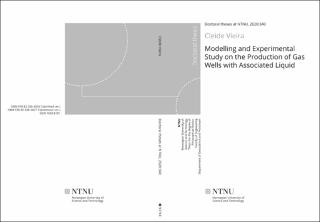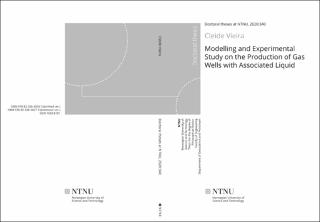| dc.contributor.advisor | Stanko, Milan | |
| dc.contributor.advisor | Whitson, Curtis Hays | |
| dc.contributor.author | Vieira, Cleide | |
| dc.date.accessioned | 2020-11-27T15:06:38Z | |
| dc.date.available | 2020-11-27T15:06:38Z | |
| dc.date.issued | 2020 | |
| dc.identifier.isbn | 978-82-326-5027-9 | |
| dc.identifier.issn | 1503-8181 | |
| dc.identifier.uri | https://hdl.handle.net/11250/2689998 | |
| dc.description.abstract | Once a gas field is developed liquid production may start and persists sometime during the production life of most dry gas wells. This liquid could be condensate, water, or both, resulting from condensate dropout due to reduction of pressure or water breakthrough. Liquids can accumulate in the wellbore if the liquid fraction increases or if gas rates decrease (e.g. with depletion) and are not able to carry liquids to surface. This phenomenon is known as liquid loading and can cause further reduction of gas rates due to excessive backpressure on the formation and erratic production. To effectively plan and design a gas well that will eventually produce liquid, it is essential to be able to accurately predict the onset of liquid loading.
In this thesis, several aspects on gas flow with associated liquid in upward inclined pipes have been studied. Experimental and numerical work have been carried out, with the following goals: (a) improve the understanding of the effect of liquid viscosity and inclination on flow map, liquid loading onset and post-loading behaviour. (b) quantify accuracy of existing liquid loading onset models using laboratory and literature data and development of an improved model with more predictability. (c) evaluate the behaviour of existing liquid loading onset models when the droplet fraction is taken into account. (d) quantify the variability in the onset rates predicted by several onset criteria and pressure drop models.
Several experimental tests were performed, and data acquired for three different fluid systems (air-water, air-Exxsol D80 and air-mixed oil) and wide range of pipe inclinations. The experimental data was compared against numerical models to quantify their accuracy in predicting the flow pattern transition between annular and slug flow.
In general, the liquid droplet-based models considered underestimated the critical gas velocity while the models based on liquid film were more conservative. Moreover, liquid film models have better accuracy than liquid droplet models. The commercial transient simulator (OLGA 7.3) did not capture properly the influence of viscosity nor predicted transitions for pipe inclinations lower than 60° from horizontal. The model of Shekhar et al. (2017) had the best accuracy from all models considered.
Including the entrainment of droplets in the gas core in liquid film models improved modestly their accuracy when predicting the experimental data and data reported in the literature.
The new liquid loading onset model developed in this work is based on the model of Barnea (1986) and uses the liquid holdup in the momentum equation instead of assuming an uniform film thickness. The model successfully reproduces the experimental data and literature data, with a higher accuracy than the model of Shekhar et al. (2017). Therefore, it represents a significant improvement and contribution of the present work.
Finally, the numerical study performed on a synthetic vertical well shows that the loading criteria and pressure drop model used affect considerably the onset rate predicted. The variation in the gas liquid loading onset rate is considerable. In general, when the gas rate is lowered below the liquid loading onset rate, the wellbore transitions rapidly from unloaded to fully loaded, except for one of the models studied. | en_US |
| dc.language.iso | eng | en_US |
| dc.publisher | NTNU | en_US |
| dc.relation.ispartofseries | Doctoral theses at NTNU;2020:340 | |
| dc.relation.haspart | Kallager, M., Vassmyr, M., Forgia, N., Yang, Z., 2018, Experimental investigation of two-phase ow regime in an inclined pipe, 11th North American Conference on Multiphase Production Technology, 2018. BHR Group 2018 Multiphase 11 | en_US |
| dc.relation.haspart | Paper 2:
Vieira, Cleide Rosemine Gany; Stanko, Milan.
Applicability of Models for Liquid Loading Prediction in Gas Wells. SPE Europec- 81st EAGE Conference and Exhibition; 2019
https://doi.org/10.2118/195466-MS | |
| dc.relation.haspart | Paper 3: Vieira, Cleide Rosemine Gany; Stanko, Milan. Effect of droplet entrainment in liquid loading prediction. The 19th International Conference on Multiphase Production | |
| dc.title | Modelling and Experimental Study on the Production of Gas Wells with Associated Liquid | en_US |
| dc.type | Doctoral thesis | en_US |
| dc.subject.nsi | VDP::Technology: 500::Rock and petroleum disciplines: 510 | en_US |

